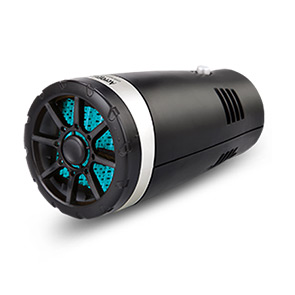Understanding Gear Shift Cable Mechanisms for Smooth Vehicle Transmissions and Performance Optimization
Understanding Gear Shift Cables Importance, Function, and Maintenance
Gear shift cables are vital components in the mechanical systems of many types of vehicles, ranging from bicycles to motorcycles and cars. They play a crucial role in the vehicle's ability to change gears smoothly and effectively, ensuring optimal performance and safety. This article delves into the importance and function of gear shift cables, as well as tips for their maintenance.
What Are Gear Shift Cables?
At their core, gear shift cables are flexible strands that connect the gear shifter to the transmission or derailleur assembly of a vehicle. They serve as a conduit for the driver's inputs, translating the driver's actions, such as moving the gear lever, into mechanical actions within the transmission system. Typically made from a steel wire core encased in a protective outer sheath, these cables are designed to withstand tension, flexing, and vibration.
In bicycles, the gear shift cable enables the rider to change gears, thereby adjusting the chain onto different sprockets. In motorcycles and cars, these cables facilitate the engagement and disengagement of gears, impacting acceleration and overall driving experience.
Importance of Gear Shift Cables
Gear shift cables are critical for several reasons
1. Smooth Gear Changes Without properly functioning cables, gear changes may become rough or erratic, resulting in a poor driving or riding experience. A malfunction can cause missed shifts, which can lead to increased wear on the transmission components and potentially dangerous situations if not addressed.
2. Driver Control The responsiveness of the gear change mechanism is vital for vehicle handling. A stiff or worn cable can hinder a driver’s ability to control the vehicle effectively, particularly in high-stakes situations such as merging onto highways or navigating steep terrain on a bicycle.
3. Safety Faulty gear shift cables can contribute to hazardous driving conditions. For example, a cable that snaps or becomes detached can lead to a loss of control over the vehicle's gearing system, potentially causing accidents.
Function of Gear Shift Cables
gear shift cable

The basic function of a gear shift cable is to convey the mechanical movement from the shifter to the transmission. When a driver or rider shifts gears, the movement pulls the cable, which in turn moves levers or rods in the transmission. This action engages or disengages gears, allowing for a range of speeds and driving conditions.
In a bicycle, when the rider pulls on the gear shifter, the cable tightens, pulling the derailleur to reposition the chain onto a different sprocket, thus changing the gear ratio. Conversely, releasing the shifter relaxes the cable, allowing for a return to its original position. In cars and motorcycles, the principle is similar, but the cables often operate in conjunction with electronic systems, adding layers of complexity and precision.
Maintenance of Gear Shift Cables
Maintaining gear shift cables is crucial for vehicle performance and longevity. Here are some key maintenance tips
1. Regular Inspections Routinely check the cables for any signs of fraying, wear, or damage. Pay attention to any stiffness or resistance when shifting gears, which may indicate that the cable is deteriorating.
2. Lubrication Keeping the cables well-lubricated helps reduce friction, which can enhance performance and extend the lifespan. Use appropriate lubricants that are compatible with the cable material.
3. Adjustment If you notice that your shifters are not performing as they should, the cable may need adjustment. Depending on the type of vehicle, this can often be done with basic tools and some technical know-how or by consulting a professional.
4. Replacement Depending on usage, gear shift cables may need to be replaced periodically. If you frequently ride or drive in tough conditions or engage in sporty driving styles, more frequent replacements may be necessary.
Conclusion
Gear shift cables are an essential component in the operation of vehicles, directly affecting the gear-changing process and overall driving experience. Understanding their importance, function, and maintenance can help ensure a safe, smooth, and responsive vehicle. Whether you're a casual cyclist, a motorcycle enthusiast, or a car driver, paying attention to your gear shift cables can contribute significantly to your vehicle's performance and safety. Regular checks and maintenance practices will lead to greater reliability, allowing you to enjoy the journey ahead.
-
Workings of Clutch Pipe and Hose SystemsNewsJun.04,2025
-
The Inner Workings of Hand Brake Cable SystemsNewsJun.04,2025
-
The Secrets of Throttle and Accelerator CablesNewsJun.04,2025
-
The Hidden Lifeline of Your Transmission Gear Shift CablesNewsJun.04,2025
-
Demystifying Gear Cables and Shift LinkagesNewsJun.04,2025
-
Decoding Clutch Line Systems A Comprehensive GuideNewsJun.04,2025
